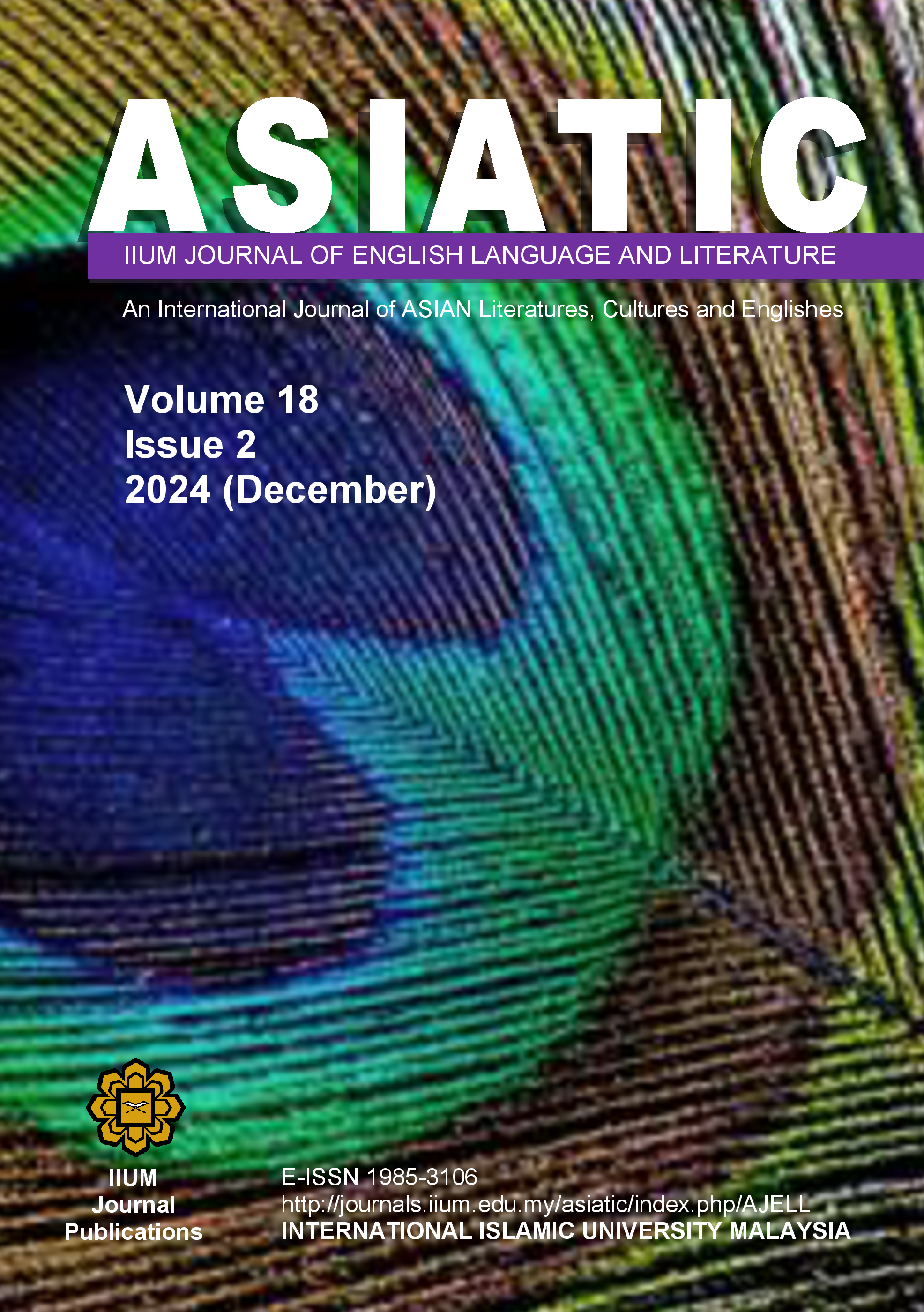The ‘Red-Light’ Community: Collective Trauma and Identity in Tracey Hoffmann’s <i>Valley of Chaya</i>
DOI:
https://doi.org/10.31436/asiatic.v18i2.3424Abstract
This study examines the shared trauma and memories of children and women involved in prostitution by viewing them as a community through analysing Tracey Hoffmann’s Valley of Chaya. The novel explores the collective identity of prostitutes (trafficked victims), shaped by the trauma they collectively experience, their mutual support, and resilience, while also highlighting internal conflicts and external pressures that reinforce their trauma. Collective trauma emerges when individuals believe they have been subject to identical horrific events. This study offers a nuanced understanding of how shared traumatic experiences foster a community among marginalised individuals, especially those who are trafficked and end up in brothels. Collective trauma, which affects a group with definable membership, is necessarily associated with that group’s shared identity. Trauma brings people together through shared experiences, creating a sense of belonging and a common identity. This paper analyses if children and women working as prostitutes could be seen as having a collective identity, as they share a similar kind of space and atrocity. The paper consults theorists to establish the arguments and to analyse the discussions around collective identity, trauma, and the stigmatised community of sex workers. Through decoding the language of trauma and Hoffmann’s depiction of child and young adult prostitutes, it takes a step further to the aspects of cultural trauma.
Downloads
Downloads
Published
How to Cite
Issue
Section
License
Copyrights of all materials published in Asiatic are held exclusively by the Journal and the respective author/s. Any reproduction of material from the journal without proper acknowledgement or prior permission will result in the infringement of intellectual property laws.



